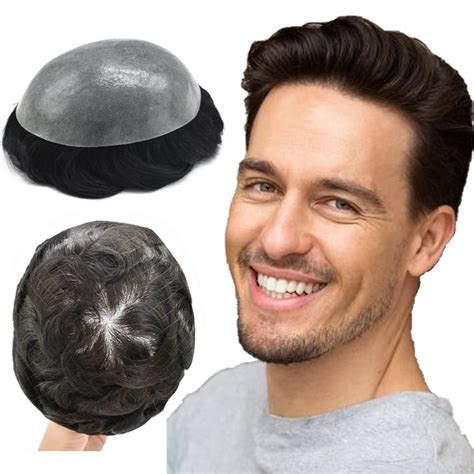Introduction
A toupee, also known as a hairpiece or hair system, is a non-surgical solution for hair loss that provides a natural-looking and seamless hair restoration. Toupee system pins play a crucial role in securing the toupee firmly to the scalp, ensuring a comfortable and discreet fit throughout the day.

Importance of Toupee System Pins
– Optimal Stability: Pins prevent the toupee from shifting or dislodging during daily activities, such as exercise, socializing, or windy conditions.
– Enhanced Comfort: Well-placed pins distribute the weight of the toupee evenly, reducing pressure points and providing a comfortable wear experience.
– Natural Appearance: Securely pinned toupees minimize visibility of the attachment points, creating a seamless and natural-looking hair restoration.
Types of Toupee System Pins
Various types of toupee system pins are available, each with unique features and applications:
| Type | Material | Description |
|---|---|---|
| U-Pins | Stainless steel | U-shaped pins that loop around the toupee base and hook into the scalp |
| C-Pins | Stainless steel | C-shaped pins that slide over the toupee base and clamp down on the scalp |
| V-Pins | Plastic or metal | V-shaped pins that insert into the toupee base and grip the scalp |
| Cross-Pins | Plastic or metal | Pins with cross-shaped heads that interlock with base materials, providing added stability |
| Boar Bristle Pins | Boar bristles | Natural pins that gently grip the toupee base and are less visible |
Choosing the Right Toupee System Pins
Selecting the optimal toupee system pins depends on factors such as:
- Toupee Base Material: Different base materials, such as lace, monofilament, or polyurethane, require specific pin types for secure attachment.
- Scalp Sensitivity: Individuals with sensitive scalps may prefer softer pins like boar bristles or plastic V-pins to minimize discomfort.
- Hair Density: Thicker hair may require more pins or larger pins to ensure sufficient hold.
- Lifestyle and Activities: Active individuals or those who frequently engage in strenuous activities may require more secure pins like U-pins or cross-pins.
Application Techniques
Proper application of toupee system pins is crucial for a secure and comfortable fit:
- Identify Attachment Points: Determine the areas where the toupee should be attached to the scalp.
- Insert the Pins: Insert the pins at an angle into the toupee base and gently guide them into the scalp.
- Adjust the Tension: Ensure that the pins are snug but not too tight, to avoid discomfort or damage to the scalp.
- Interlock the Pins: For added stability, use cross-pins or interlocking pins to create a secure network of support.
- Conceal the Pins: If desired, use pin cover clips or hair fibers to conceal the pins for a more natural appearance.
Maintenance and Care
Regular maintenance of toupee system pins is essential to ensure their longevity and effectiveness:
- Clean the Pins: Periodically clean the pins with a mild soap and water solution to remove any debris or hair product buildup.
- Inspect the Pins: Check the pins for any signs of damage or bending, and replace them if necessary.
- Store the Pins: Store the pins in a dry and cool place when not in use, to prevent rust or corrosion.
Benefits of Using Toupee System Pins
– Peace of Mind: Securely pinned toupees provide peace of mind during daily activities, eliminating the worry of slippage or discomfort.
– Improved Self-Confidence: A well-secured toupee enhances self-confidence by providing a natural appearance and reducing anxiety about potential hair loss.
– Long-Lasting Wear: Properly pinned toupees can extend the lifespan of the hair system by preventing premature detachment or damage.
– Versatility: Toupee system pins are compatible with a wide range of toupee base materials and hair densities, providing versatility for different hair restoration needs.
Considerations and Precautions
– Scalp Sensitivity: Individuals with extremely sensitive scalps may need to experiment with different pin materials or consult with a hair restoration specialist for guidance.
– Pin Placement: Avoid inserting pins too close to the hairline or eyebrows, as this can cause discomfort or visible pin marks.
– Excess Tension: Over-tightening the pins can lead to scalp irritation, follicle damage, or premature hair loss.
Conclusion
Toupee system pins are an integral part of a successful toupee hair restoration system. By understanding the different types, applications, and maintenance techniques of toupee system pins, individuals can achieve a secure, comfortable, and natural-looking hair restoration that enhances their self-confidence and quality of life.
Additional Resources
- International Society of Hair Restoration Surgery (ISHRS): https://www.ishrs.org
- American Hair Loss Association (AHLA): https://www.americanhairloss.org
- National Hair Loss Association (NHLA): https://www.nhla.com
